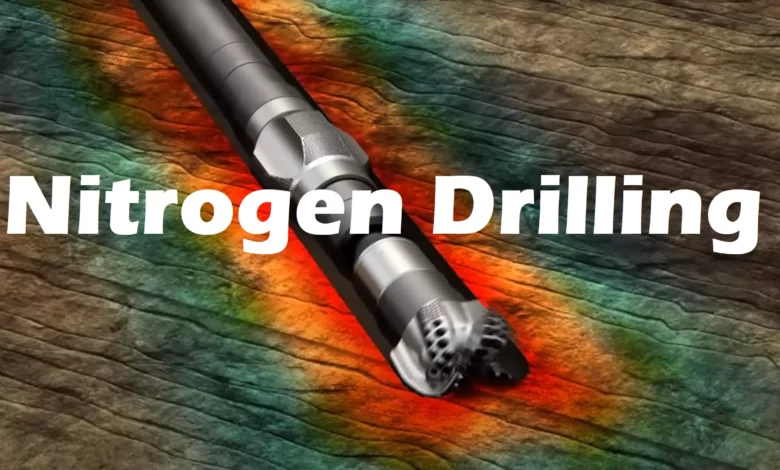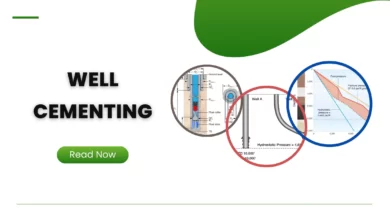Nitrogen Drilling

Nitrogen Drilling Overview
Nitrogen may be used in place of air drilling in underbalanced drilling operations. Its major advantage is that mixtures of nitrogen and hydrocarbons are not flammable. The risk of downhole fires in underbalanced drilling can be reduced if nitrogen is used as the drilling fluid.
Flammability limits are basically controlled by the oxygen concentration. The following correlation can be used to estimate the minimum oxygen concentration required for a flammable mixture in the presence of nitrogen and methane:
Equation 1
![]()
where
Qmin= minimum oxygen concentration, %
p= absolute pressure, psia
The nitrogen density is slightly lower than the density of air. However, under downhole conditions its cuttings transport efficiency is effectively the same as that of air. Because of the cost factor of nitrogen (N2), selection of the injection rate needs to be
Currently there are two major techniques available to supply nitrogen for underbalanced drilling operations:
- Liquid (Cryogenic) nitrogen supply
- On-site generated nitrogen (Membrane filter)
These two types of nitrogen supply options are explained in the following sections.
Liquid (Cryogenic) Nitrogen Supply
Besides drilling, nitrogen is widely used at the wellsite for various completion, stimulation and production operations. Because of its very low boiling temperature (-321°F), nitrogen needs to transported and stored in cryogenic tanks.
At wellsite locations, pumps and heat exchangers are needed to convert the liquid nitrogen into a usable gaseous form. Various sized nitrogen conversion units are available for different size operations. Field experience shows that the cost of liquid nitrogen can be as high as 25% of the total drilling cost.
Since nitrogen is converted from a liquid phase, it is more straightforward to measure the delivery rate for drilling. Normally, each gallon of liquid nitrogen yields approximately 100 scf of gaseous nitrogen. It is essentially pure completely eliminating potential corrosion problems in the presence of connate water and oxygen.





